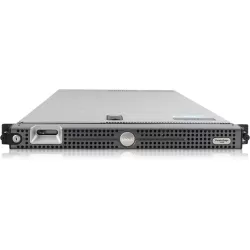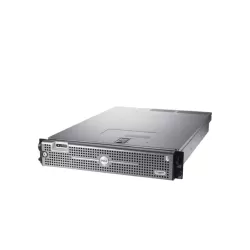Rack server for demanding business IT applications | Dell, Fujitsu, IBM, SUN Microsystems
Introduction:
When it comes to enterprise computing, there are few solutions as reliable and scalable as a rackmount server. Rackmount servers have been the go-to choice for IT professionals for decades, offering a cost-effective and space-efficient way to manage large amounts of data and applications. In this article, we'll take a closer look at what rackmount servers are, how they work, and why they're the ultimate solution for enterprise computing.
What is a Rackmount Server?
A rackmount server is a type of server that is designed to be mounted in a standard rack enclosure. These enclosures typically hold multiple servers, allowing IT professionals to manage large amounts of computing power in a small space. Rackmount servers are available in a variety of sizes, ranging from 1U to 4U, with each unit representing a certain amount of vertical space in the rack.
How Does a Rackmount Server Work?
At its core, a rackmount server is no different from any other type of server. It consists of a motherboard, CPU, RAM, storage drives, and other components that work together to process data and run applications. The difference lies in the form factor and the way the components are arranged. In a rackmount server, the components are arranged vertically to fit within the rack enclosure. This allows for more efficient use of space and better airflow, which can help keep the server cool and running smoothly.
Top five rack servers for small businesses
For small businesses, choosing the right rack server is crucial. A server that meets the needs of a small business must be reliable, cost-effective, and scalable. In this article, we'll look at the top 5 best rack servers for small businesses.
HPE ProLiant DL20 Gen10 Rack Server:
The HPE ProLiant DL20 Gen10 Rack Server is a powerful and compact server that is perfect for small businesses. It is designed to be affordable and reliable, making it a great choice for businesses with limited budgets. The server comes with a variety of features, including Intel Xeon processors, DDR4 memory, and flexible storage options.
Dell PowerEdge R240 Rack Server:
The Dell PowerEdge R240 Rack Server is a high-performance server that is perfect for small businesses. It comes with powerful Intel Xeon processors, DDR4 memory, and flexible storage options. It is also designed to be easy to manage, making it a great choice for businesses that don't have a dedicated IT department.
Lenovo ThinkSystem SR250 Rack Server:
The Lenovo ThinkSystem SR250 Rack Server is a versatile server that is perfect for small businesses. It comes with powerful Intel Xeon processors, DDR4 memory, and flexible storage options. It also features a compact design, making it a great choice for businesses with limited physical space.
Supermicro 1U Rack Server:
The Supermicro 1U Rack Server is a high-performance server that is perfect for small businesses. It comes with powerful Intel Xeon processors, DDR4 memory, and flexible storage options. It also features a compact design, making it a great choice for businesses with limited physical space.
Fujitsu PRIMERGY RX1330 M4 Rack Server:
The Fujitsu PRIMERGY RX1330 M4 Rack Server is a powerful and reliable service that is perfect for small businesses. It comes with powerful Intel.
Dell Used Rackmount Servers List in India
| Server Model | RAM | Processor | Storage |
| HP ProLiant DL360P Gen8 | 64GB DDR3 (8 x 8GB) | 2 x Intel Xeon E5-2670 v2 (10 Core, 20vCPU) | 1.2TB SAS HDD (2 x 600GB) |
| HP ProLiant DL360 Gen9 | 64GB DDR4 (2 x 32GB) | 2 x Intel Xeon E5-2673 v3 (12 Core, 24vCPU) | 1.2TB SAS HDD (2 x 600GB) |
| HP ProLiant DL380 Gen9 | 64GB DDR4 (2 x 32GB) | 2 x Intel Xeon E5-2673 v3 (12 Core, 24vCPU) | 1.2TB SAS HDD (2 x 600GB) |
| Dell PowerEdge R620 | 64GB DDR3 (8 x 8GB) | 2 x Intel Xeon E5-2670 v2 (10 Core, 20vCPU) | 600GB SAS HDD (2 x 300GB) |
| Dell PowerEdge R630 | 64GB DDR4 (2 x 32GB) | 2 x Intel Xeon E5-2673 v3 (12 Core, 24vCPU) | 600GB SAS HDD (2 x 300GB) |
| Dell PowerEdge R720 | 64GB DDR3(8 x 8GB) | 2 x Intel Xeon E5-2670 v2 (10 Core, 20vCPU) | 600GB SAS HDD (2 x 300GB) |
| Dell PowerEdge R820 | 128GB DDR3 (8 x 16GB) | 4 x Intel Xeon E5-4657L v2 (12 Core, 24vCPU) | 1.2TB SAS HDD (2 x 600GB) |
Why Choose a Rackmount Server?
There are several reasons why a rackmount server may be the best choice for your enterprise computing needs:
Scalability:
Rackmount servers are designed to be scalable, meaning you can easily add more servers to your rack as your computing needs grow. This makes them a cost-effective solution for businesses that manage large amounts of data and applications.
Space Efficiency:
Rackmount servers are designed to fit within a standard rack enclosure, which means you can manage a large amount of computing power in a relatively small space. This can be especially important for businesses that have limited physical space.
Improved Cooling:
Because of the way, the components are arranged in a rackmount server, they tend to have better airflow than other types of servers. This can help keep the server cool and running smoothly, which can reduce the risk of downtime and hardware failures.
Conclusion:
In conclusion, a rackmount server is the ultimate solution for enterprise computing. They offer scalability, space efficiency, and improved cooling, making them a cost-effective and reliable choice for businesses of all sizes. If you're in the market for a new server, be sure to consider a rackmount server as your top choice.
A rack mount is a standardized frame or enclosure designed to hold and organize electronic equipment or components. Rack mounts are commonly used in data centers, server rooms, and other IT environments to mount and organize servers, networking equipment, storage devices, and other electronic devices. The standard size for a rack mount is 19 inches wide, with vertical spacing or "U" heights of 1.75 inches. Rack mounts typically come in heights of 1U, 2U, 3U, and so on, with larger U sizes providing more vertical space for equipment.
Yes, you can use a server without a rack. A server can be placed on a desk or shelf, or in any other suitable location that provides adequate ventilation and protection from physical damage or environmental factors. However, using a rack can help to organize and consolidate multiple servers and other electronic equipment in a more efficient and space-saving manner, which can be especially useful in larger data centers or server room environments.
The two main types of server racks are open-frame racks and enclosed racks.
Open frame racks are essentially a frame made of metal or another sturdy material that provides support and space for mounting equipment but does not have sides, front, or back panels. This type of rack is often used in small server rooms or closets, where equipment can be easily accessed and maintained. Enclosed racks, on the other hand, are fully enclosed on all sides, with front and back doors, and may also have side panels. These racks provide additional security and protection for the equipment inside, as well as improved environmental control for temperature and humidity. Enclosed racks are commonly used in larger data centers or server rooms, where multiple racks may be stacked together and require higher levels of organization and control.









